Molecular gastronomy is a cross between cooking and science, using scientific experimentation to deconstruct food to its simplest elements, only to reconstruct it in new and unexpected ways.
Those who delve in it are in part mad scientists and gourmet chefs, but the best molecular gastronomy chefs are those that find the perfect balance between flavor and artistry, without neglecting the showmanship that comes with this type of cooking. The premise is exploration, expanding the boundaries of food by using a scientific approach to cooking.
There are many different molecular gastronomy techniques, all developed to create delicious dishes in surprising new presentations. Below we explore the most popular techniques: spherification, gelification, emulsification, transformation, and sous vide.
1. Pearls & Caviar: Spherification
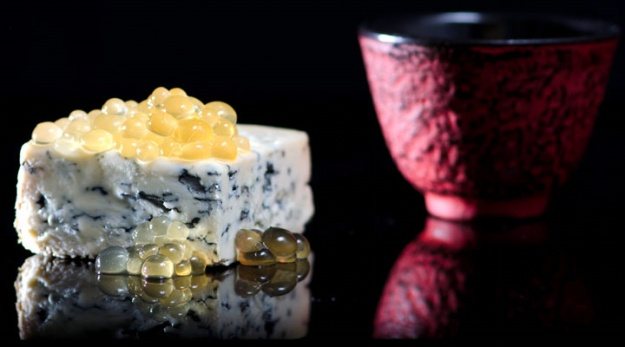
Spherification is arguable the commonly seen molecular gastronomy technique. It basically uses chemical reactions to “trap” liquid ingredients with an extremely thin, tasteless membrane, forming clear “beads”, which look like pearls or caviar eggs. The technique is based on the reaction between calcium chloride and alginate, two substances that when mixed together gel together. The main ingredient– for example, orange soda – is mixed with the calcium chloride, and then dropped into a mixture of alginate and water, one drop at a time, each drop immediately forming a bead. You’ll need a molecular gastronomy kit, but spherification is fairly simple, and any liquid concoction can be transformed into a delicious edible bead to accompany dishes and drinks.
Recipe: Honey Caviar with Fourme D’Ambert and Black Tea by Quantum Chef of MolecularRecipes.com
2. Foams and Airs: Emulsification
Foams, or ‘airs’ as they’re sometimes called, are used in molecular gastronomy to add an extra touch of flavor, an almost ethereal quality to a dish. Super light, you almost don’t eat them, but rather the foam dissolves in your mouth, enveloping your taste buds in a flavor that disappears seemingly into thin air. The technique is not hard to master, as it mainly relies on using a hand blender to mix your ingredient of choice with soy lecithin. An emulsifier derived from soybeans, lecithin has little flavor so it will not affect the taste of the foam you’re creating, but finding the right proportion is key. The applications are endless, from balsamic foam to put over strawberries, to a citrus air to top a margarita cocktail, to the inventive chive foam recipe below.

Recipe: Broiled Mussels with Chive Foam by Popartichoke.com
3. Molecular Gastronomy = Slow and Easy: Sous Vide
Sous vide is the technique of slow cooking meat under a water bath, at low even temperatures (55 to 60 °F), and for an extended period of time. Such molecular gastronomy techniques have existed since the late 1700s, but were lost over time and only rediscovered in the mid 1960s. Because the meat is immersed in water that is at a constant temperature, every part of it cooks evenly, no juices escape and it is never overdone, and because the temperature is so much lower, the food cells do not rupture, rendering the texture superbly succulent and tender. The cooking times can vary, but sometimes can last for as long as two or three days! Sous vide requires special equipment, most specifically a “sous vide machine” or some type of immersion circulator. They’re available for sale home use. Once you have the technical side figured out, the tenderest steak you’ve ever had can be cooked right in your kitchen!
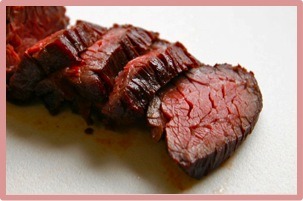
Recipe: Sous Vide Steaks by J. Kenji Lopez-Alt of Seriouseats.com
4. Gels: Gelification
One of the more intricate molecular gastronomy techniques, gelification it relies on jellifying agents like Agar Agar or Carrageenan. The purpose is to turn liquids into a more solid state. This allows the cook to serve what are typically liquid dishes in a new, more solid and unpredictable format. We love this application, since it allows you to experience food in such a completely different and fun way, especially the “noodle” technique. For this technique, the gelling agent is mixed with the liquid ingredient of your choice (say, tomato soup or papaya juice) and brought to a boil, then later passed through a clear silicone tube (to achieve that spaghetti shape) under an ice bath. The result is perfectly shaped gel ‘noodles’!
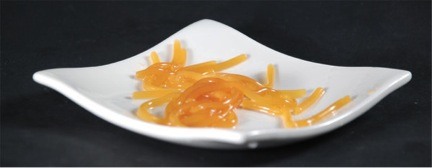
Recipe: Papaya Agar Agar Noodles by Jason Logsdon of ModernistCookingMadeEasy.com
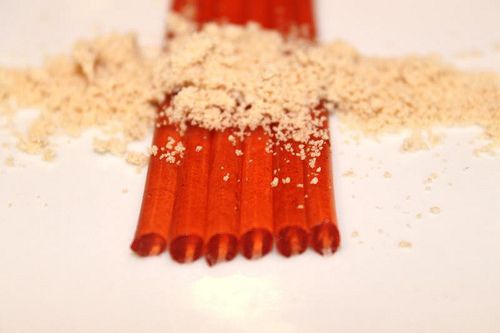
Recipe: Peanut Butter Powder & Jelly Noodles by Mira Mi of Mirauncut.com
5. Transformation: Transglutaminase
Though it sounds less than appetizing, one of the best and most fun molecular gastronomy techniques uses something known as “meat glue”, known also by its technical name, transglutaminase. This is a tasteless enzyme that can bind together protein-rich foods like meats. It comes in the form of powder that is brushed into the two sides of meat to bind, which are then pressed tightly together for certain period of time to fully set. The fun part is that you can form meat into different new shapes (like bacon spirals!), or even bind together two typically thin cuts (like flap steak) to get a nice thick steak.
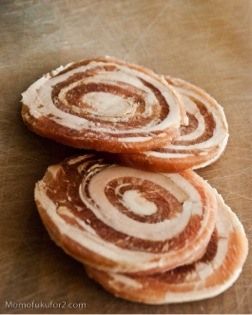
Recipe: Bacon Spiral by Stephanie Voon of Momofukufor2.com
Traditional cooking is great, but there’s something to be said about experimentation and the science of cooking with molecular gastronomy. a few key essential ingredients and some equipment are all that’s needed to create new, innovative and delicious new dishes! Have you tried any of the above molecular gastronomy recipes? Let us know in the comments!